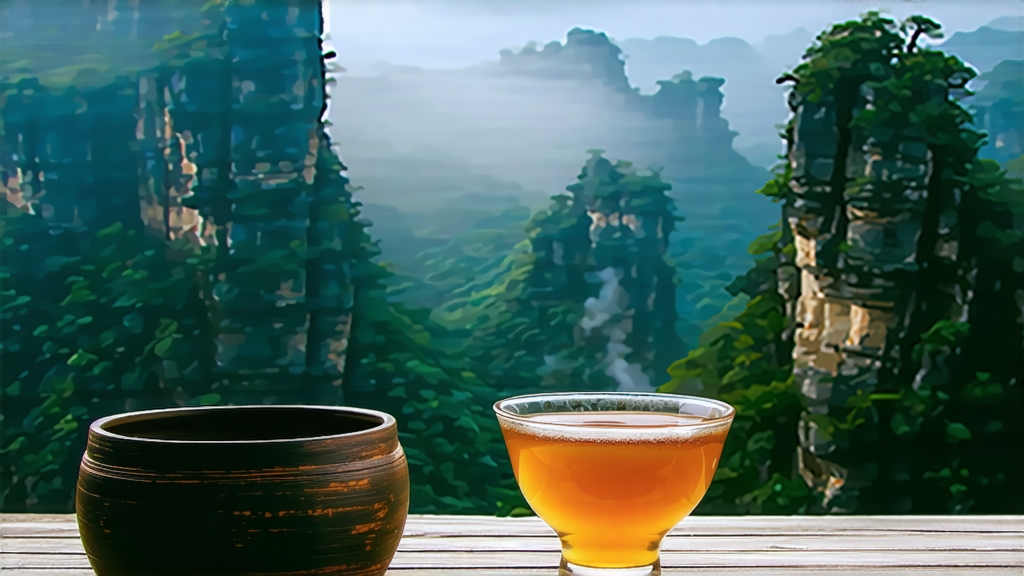
High above the Jiuqu Xi—Nine-Bend River—of northern Fujian, the Wuyi Mountains rise like broken ink paintings, their vertical cliffs catching morning mist and afternoon sun in equal measure. It is here, in narrow terraces no wider than a monk’s path, that Shui Xian, the “Water Immortal,” has been coaxing mineral memories out of volcanic rock for more than three centuries. To the international tea traveler who has met Tie Guan Yin’s green jade elegance or Da Hong Pao’s royal pedigree, Shui Xian offers something more contemplative: a slow conversation between stone and water, sealed inside a single leaf.
History: From Monastic Cutting to Global Cup
Legend places the birth of Shui Xian in the Song dynasty, yet verifiable records begin in the Qing Kangxi period (1662-1722). A wandering monk in Jianyang prefecture is said to have taken cuttings from an old tree whose roots twisted into a temple well—hence the name “Water Immortal.” The cultivar was carried deeper into the Wuyi massif, where microclimates of warm days, cool nights, and constant mist slowed leaf growth, condensing flavor. By the late 1800s, Shui Xian had surpassed other Wuyi varieties in acreage; Fujianese merchants shipped it by junk to Canton, then to British and Dutch traders who rechristened it “Narcissus” after the fragrant daffodil. Today, while Da Hong Pao commands auction headlines, Shui Xian remains the workhorse of Wuyi, accounting for sixty percent of yan cha (“cliff tea”) production and forming the backbone of countless gongfu sessions across Asia and, increasingly, Berlin, Brooklyn, and Brisbane.
Cultivar & Terroir: Rock, Root, and Rhyme
Botanically, Shui Xian is a large-leaf, medium-late budding variety (Camellia sinensis var. sinensis cv. Shui Xian) with an erect growth habit and dark, leathery foliage. Its real magic, however, is geological. The Wuyi range is a UNESCO geopark built on Jurassic tuff and granite, weathered into infertile, mineral-rich soils. Growers plant Shui Xian in crevices so narrow that roots must fracture rock to survive, absorbing calcium, magnesium, and potassium that later translate into the celebrated “yan yun”—a lingering, cooling mineral aftertaste that Chinese poets liken to “licking a wet stone while orchids bloom behind you.” Elevation ranges from 200 m to 600 m; the most prized gardens, such as “Hui Yuan Keng” and “Wu Yuan Keng,” face northeast, catching the first light yet avoiding scorching afternoon heat, allowing amino acids to accumulate while catechins remain moderate—an equilibrium that gives Shui Xian its signature thickness without astringency.
Craft: The Slow Dance of Fire and Time
Unlike green oolongs that chase freshness, Shui Xai is forged. The harvest arrives in late April, when three half-mature leaves and a bud form a soft, angled “fish-hook.” After a brief outdoor withering under mountain breeze, the leaves are shaken in rattan drums to bruise edges, initiating oxidation at 25 °C. Once the leaf rim turns chestnut while the center stays jade—a state called “green leaf with red border”—oxidation is halted at 30-40 % by a 220 °C tumble in electric woks. What follows is the quintessentially Wuyi step: charcoal roasting. Using local hardwood ash, the tea master builds a pyramid of glowing embers inside a brick pit, covers them with a bamboo screen, and spreads the tea in layers no thicker than two centimeters. Over eight to twelve hours, the leaf temperature hovers at 80 °C, driving off residual moisture while pyrolyzing sugars into caramel and pyridines, the molecules behind roasted nuts and dark chocolate. The tea is allowed to rest for forty-five days, then re-roasted; premium grades may cycle through this ritual three times across six months, each round lowering the firing temperature to avoid scorching while tightening the leaf structure. The result is a strip-shaped leaf, glossy and midnight-black, that clinks like porcelain when poured onto a porcelain gaiwan.
Grades & Styles: Navigating the Cliff Spectrum
Shui Xian is classified by both garden and roast. “Zheng Yan